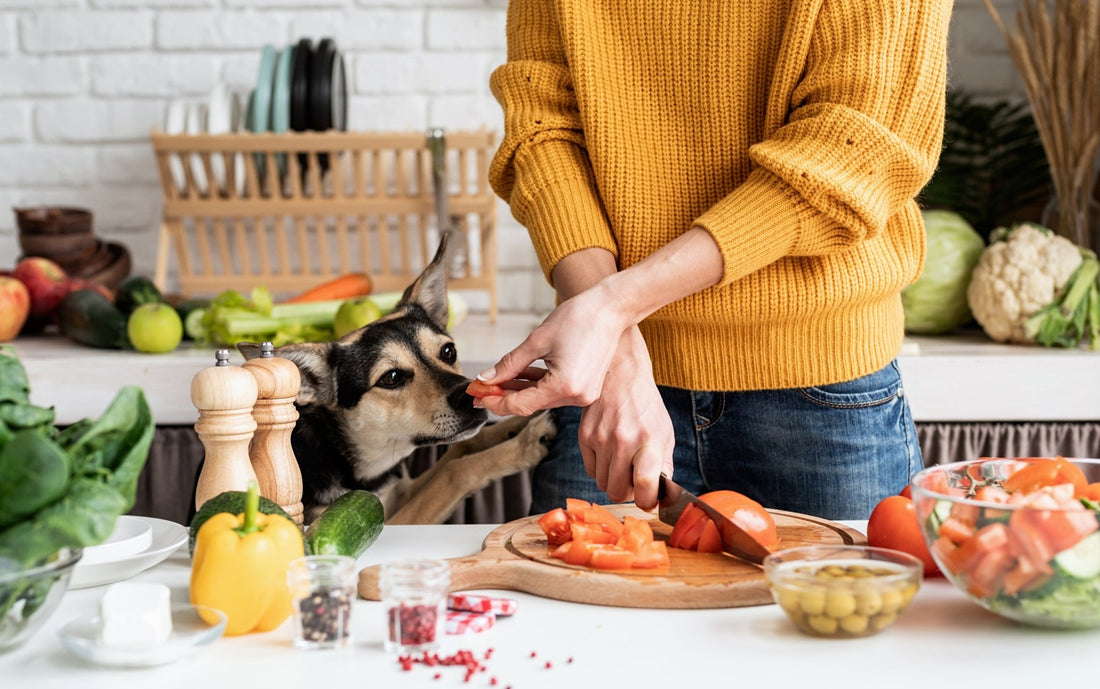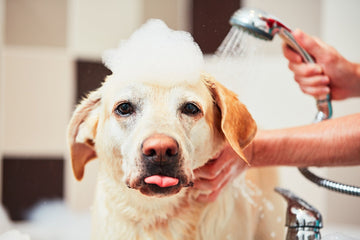Crafting Nutrition: The Essentials of Homemade Pet Food

In this guide, we’ll explain the essentials of homemade pet food, helping you give your furry friend the nourishment they deserve with confidence.
Like humans, Nutrition is a cornerstone of our pets' overall health and longevity. A balanced, complete diet that meets all of their essential needs is one of the best ways we can ensure our pets are healthy and happy for years. While commercial pet foods (like bagged kibble and canned wet food) are plentiful, many pet parents are curious about natural, homemade alternatives. Crafting your pet's food at home allows you to tailor their nutrition to specific needs and preferences, while using ingredients you know and trust. So, where to begin?
Understanding Your Pet's Dietary Needs
Before taking on the task of preparing your pet’s food, let’s make sure you understand your pet's dietary requirements. Here we’ll focus on dogs and cats: Dogs are omnivores, thriving on a balanced diet of protein, carbohydrates, and fats. Cats, however, are obligate carnivores, relying heavily on animal-derived protein for essential nutrients like taurine and arachidonic acid. Some nutrients are easier to supplement, and some are best absorbed in whole-food form… more on that later!
Importance of Balancing Macronutrients
Just like humans, pets require a balance of macronutrients to stay healthy. Proteins serve as the building blocks for muscle and tissue repair, while carbohydrates provide energy. Fats are essential for maintaining healthy skin and a shiny coat. A good pet food recipe will provide a balance of these macronutrients, relative to your pets species, age, and health, to ensure your pet receives adequate nourishment.
Selecting Ingredients
We know the quality of our ingredients has a huge impact on human health, so why wouldn’t the same be true for our pets? Opt for fresh, wholesome ingredients whenever possible. Basically, think about what they may eat in the wild - dogs are pack animals, and may have been able to hunt and eat lean meats like chicken, turkey, and even beef s, while cats' typical wild prey would be birds, fish, and small animals’ organ meats. Depending on the pet, it may make sense to include a variety of vegetables and fruits to provide essential vitamins and minerals. Be cautious of ingredients that are toxic to pets, such as onions, garlic, and grapes. In any case, follow a proven recipe for your pets’ needs and stage of life, like those found in Hilary’s Blend Complete and Balanced Recipe Books - for Dogs or Cats
Supplementation
Even with careful planning, homemade pet food may lack certain essential nutrients. While pets on all types of diets may benefit from regular supplements like omega fatty acids, digestive enzymes, or collagen, there are many nutrients that are already added (synthetically) into traditional, processed pet foods. To ensure your home-fed pet doesn’t miss out on any of these added nutrients, Hilary’s Blend also created a complete supplement for Cats and Dogs to support your home-made recipes.

Transitioning and Monitoring
When transitioning to homemade pet food, we recommend to introduce it gradually. Mixing small amounts of homemade food with your pet's current kibble or wet food is a great start, and if all goes well, gradually increase the homemade food portion over time. Or, use one of the 10 Transitioning Recipes in your Hilary’s Blend Cook Book to simplify the process. Either way, when introducing any new diet or supplement, keep an eye on your pet’s weight, energy levels, and overall condition to ensure they're feeling good on their new diet.
Okay, Let’s Make Pet Food!
Now that you’re informed about key considerations with homemade cat and dog food, let’s explore some reputable sources for pet food recipes and ingredients. One of our most trusted brands, Hilary’s Blend, provides a comprehensive selection of recipes, supplements, and “Meal Makers” to empower pet parents to take control of their pets nutrition.

Why are we talking so much about Hilary’s Blend?
As one of the most trusted, proven sources for quality home-made pet food, we are proud to offer Hilary’s Blend products to the PetsEssentials community. Hilary’s Blend Dogs & Cats cookbooks are a lifelong investment, EACH containing 101 species-optimized recipes for all stages of life.
You will have trusted recipes for any number of potential needs throughout your pets’ lives, including:
- Recipes to Transition pets from Kibble/Traditional food
- Recipes for Puppies and Kittens
- Recipes for Senior Pets
- Limited-Antigen (Allergy-Friendly) Pet Recipes
- Vegetarian Recipes (for Dogs only)
- Recipes for Diabetic Pets
- High-Calorie Recipes (for recovering pets to gain weight)
- Low-Calorie Recipes (for pets that tend to overeat)
- Renal Recipes, Cardiac Recipes, Low Fat Recipes, and so much more.
And, Hilary’s Blend makes it easy to feel confident in your homemade pet food, with complete supplement support designed for these recipes. Want an even easier way to cook for your dog? Try the Hilary’s pre-mixed Meal Maker and add the meat of your choice (this product is not suitable for cats).
We hope our guide has given you the tools to incorporate homemade pet food through trusted brands like Hilary's Blend. Our goal is to support and empower every pet parent to make informed choices about their pets’ nutrition and care. Through planning, preparation, and monitoring, and with the help of a trusted source like Hilary’s Blend, we believe homemade, natural pet food is the future!




